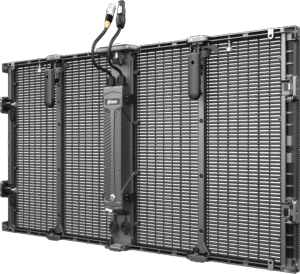How to Choose a Cheap and Effective Stage LED Screen?
How to Choose a Cheap and Effective Stage LED Screen? Discover expert tips to balance budget and performance, avoid hidden costs, and select the best LED screens for professional stage effects.

The price of stage LED screens varies widely based on several factors:
Key Features for Professional Stage LED Screens
| Feature | Details |
|---|---|
| Refresh Rate | ≥3,840Hz to prevent flickering during fast-paced performances. |
| Color Accuracy | ΔE<3 color consistency for professional-grade visual effects. |
| Smart Control | Built-in media server + wireless connectivity (Wi-Fi/Bluetooth) for easy setup. |
| Warranty | Choose brands offering 3-5 years of module and power supply coverage. |
Top Stage LED Screens by Budget
| Budget Range | Model | Specs | Ideal Use Case |
|---|---|---|---|
| Under $10,000 | Absen AK-320H | 2.6mm pixel pitch, 700 nits, IP54 rating | Small indoor events, school performances |
| $10,000–$30,000 | Barco E2 S3 | 2.5mm pixel pitch, 1,000 nits, IP65 outdoor rating | Concerts, indoor-outdoor hybrid events |
| Over $30,000 | ROE Visual P1.5 | 1.5mm pixel pitch, 1,600 nits, 3D-compatible | Large theater productions, premium corporate events |
Resolution and Pixel Pitch:
Higher resolutions, such as 1.5mm pixel pitch, ensure clearer images but increase costs. For indoor events, 2.5mm to 4mm pitches are more cost-effective, while outdoor screens require smaller pitches (1.2mm to 1.9mm) to ensure visibility.
For example, a 10-square-meter indoor screen with a 3mm pitch costs about $5,000-8,000, while a 4-square-meter outdoor screen with a 1.5mm pitch costs between $12,000-18,000.
Brightness and contrast:
Screens with a brightness of 800-1,200 nits are suitable for dimly lit venues, while screens with brightness over 1,500 nits are suitable for outdoor use in full sunlight. Higher contrast ratios (e.g. 5,000:1) can improve color depth, but the price will also increase.
Durability and protection:
Outdoor screens need to meet IP65/IP67 water and dust resistance ratings, which can increase the price of stage LED screens by 20-30%. Aluminum frames and weatherproofing can further increase costs.
Screen size and customization:
Modular design allows for flexible sizing, but assembly costs may be higher. Custom-shaped or curved screens can cost twice as much as standard rectangular screens.
Key Features to Prioritize
Budget is important, but focus on the following features to maximize your ROI:
How to Save on Stage LED Screens?
Buy Refurbished Screens: Buy used LED screens from China, certified refurbished screens, at discounts of up to 40% to 60%.
Buy Volume Discounts: Buy additional modules or accessories to enjoy bundled pricing.
Leasing Options: Monthly leases (e.g. $300-800/month) reduce upfront costs for occasional use.
Share:
More Posts
Do Stage LED Screens Harm Your Eyes?
I. Factors That May Affect Eye Health 1. Blue Light Radiation Stage LED Screens emit small amounts of high-energy blue light (400-450nm wavelength), which may increase retinal oxidative damage with prolonged exposure. Short-term effects: May cause dry eyes, fatigue, similar to prolonged phone/computer use. Long-term effects: No conclusive evidence shows stage LED blue light causes permanent
Why We Chase the Music
Some seek solace in the cathedral hush of nature, others lose themselves within the canvas’s frame or the novel’s page. But for an increasing multitude, the sacred space we crave manifests most powerfully under the artificial stars of a stadium or the vaulted ceilings of a concert hall. We gather, often strangers bound by invisible
